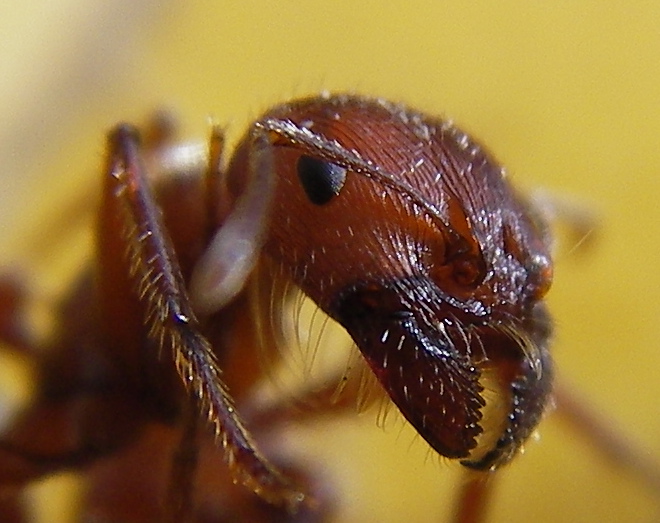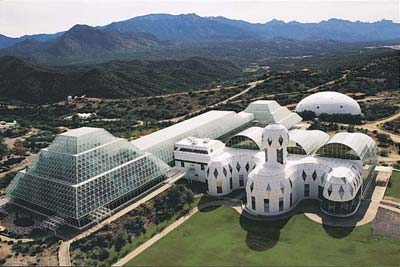
The Pheromone Trail of Ants
Greg Parker
Imagine if you were born blind and deaf and everyone around you were also blind and deaf, and the only way you communicated were with different odors secreted from a gland near your anus. Well, this is the wonderful world of the ant, and they have made the best of their severely limited methods of communication. Ants have been around for about the last 150 million years, which means they survived the extinction of the dinosaurs. According to the foremost expert in ants, EO Wilson, ants are capable of:
· Rain proofing their nests just prior to monsoon season
· Building temporary nests out of their own bodies
· The ability to have gardens and store food
· Organize wars
· Have generals and soldiers
· Organize themselves into castes
· Take slaves
· Nurse young
· Develop sophisticated climate control systems
· Organize massive projects that benefit the colony as a whole
· Detect pheromones as dilute as one part in a billion
· Dispose of the dead
All these feats are accomplished with a cerebral ganglia a quarter the size of a small pin’s head.
EO Wilson
In the 1950s, scientist EO Wilson noticed that ants seemed to be able to find food, and tell other ants that there is food, sometimes quite a distance from the nest. Upon examination, he saw that they occasionally dragged their abdomen on the ground, possibly leaving a chemical trail behind them. After observing this behavior, he came up with a simple experiment; he removed various glands from the abdomen of ants, washed them, then broke them open and dragged them across a surface with a wooden pick. What he saw was quite stunning, the ants only responded to a single broken gland, and responded vigorously. This led to a great number of tests, using different techniques and chemicals. A classic technique used a container with a nest of ants at one end. He then dragged a chemical signal across the bottom, and then split the chemical trail in two, in the shape of a “Y”. At the junction he could use any combination of two chemicals, or a blank control to see which one the ants chose, if any.
He experimented with food set a distance from the nest. He observed that ants movements seem random until they find food. They then seem compelled to share the information with other ants. They head straight back to the next, leaving a chemical trail behind as they move. If they encounter any other ants, they contact antenna, which seems to convey the message of food. The original ant is sometimes seen to lead the second ant to the food, while both laying down the chemical trail. This is repeated until the food is gone, and the chemicals evaporate.
Pheromones
Gas chromatography and mass spectrometry were used in the 1960s to attempt to identify the chemicals used by the ant colonies. These first techniques were crude, requiring large quantities of ants for extraction. In 1971 the word pheromone was substituted for chemicals, and researchers isolated the first pheromone requiring 8.2 pounds of dried ants! The chemical was called methyl 4-methylpyrrole-2-carboxylate, and is a major pheromone seen in some ant species. The identification of these compounds was accelerated in the 1980s-1990s with improved equipment sensitivities of 100-fold. During this time about 80 pheromones have been identified as communication signals between ants, originating from seven abdominal glands.
The Dead
At some point in the 1960s, researchers noticed that ants disposed of their dead in one place. They did this after the ant had been dead for a few days, so naturally they thought a pheromone was responsible. Using though catalogs of data on chemicals seen in ants, researchers came upon oleic acid, which was secreted following death. Oleic acid is a monosaturated omega-9 fatty acid, found primarily in olive oil, that evidently screams death to surviving ants. When researchers placed oleic acid on a live ant, it was treated as dead, and forced into the dead pile! There seemed to be no convincing the other ants that the "death pheromone" covered ant was alive and well.
Invasion of Biosphere 2
Biosphere 2 is a 1.28 hectare enclosed greenhouse structure in Tucson Arizona, built as a space colony model. This biosphere was meant to serve as a self sustaining training shelter for humans, to see if humans could live enclosed on another planet. This shelter was inhabited by eight people for two years (1991-1993) and 7 people for 6.5 months in 1994 (Pauly Shore was not invited). They had a host of problems, including decreased oxygen concentrations (as low as 14.5%), carbon dioxide fluctuations, and unexpected ecological interactions. When the biosphere was created, biologists devised a complete flora and fauna arrangement, with ideal populations, but the ant did not listen. By 1993, the “crazy ant” Paratrechina longicornis numbers had increased to extremely high levels. They had multiplied from a few hundred ants to a few million. They colonized, killed, stole, and dominated every species of insect that was big enough and couldn't defend itself. The bee, moth, butterfly, worm, and spider populations were decimated, sometimes to extinction.

This is a great example of how humans have tried to tame nature, and how nature, in the form of a blind and deaf, anal gland sniffing ant, has outsmarted us. The ant has been here since the time of the dinosaurs, and will likely survive long after humans are extinct.
References
Ayasse, M.; Paxton, R. 2002. Brood protection in social insects. Chemoecology of Insect Eggs and Egg Deposition. Berlin: Blackwell. 117–148.
Morgan, D. E. 2009. Train Pheromones of Ants. Physiological Entomology 34:1-17.
Wetterer , J.K., et al. 1999. Ecological dominance by Paratrechina longicornis (Hymenoptera: Formicidae), an invasive tramp ant in Biosphere 2 . Florida Entomologist 82:381 – 388 .
Wilson , E.O. 1959. Source and possible nature of the odor trail of fire ants . Science 129:643 – 644.
Wilson , E.O. 1971. The Insect Societies. Harvard University Press, Cambridge , MA.
No comments:
Post a Comment